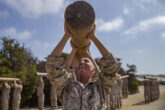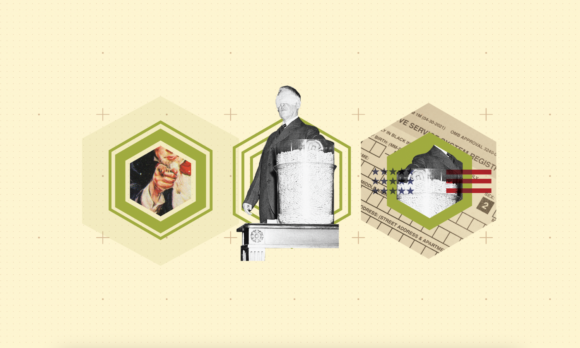National Security Human Capital Program
Within National Security Human Capital Program
The success of U.S. national security is driven by the uniformed warfighters and civilian professionals who develop, execute, and assess U.S. national security strategy, contingency plans, operational concepts, rules of engagement, doctrine, and policy. The U.S. warfighting edge therefore relies heavily on recruiting, retaining, and leveraging top talent from across the nation with the knowledge, skills, abilities, and other attributes necessary to deter and, should deterrence fail, defeat adversaries.
To ensure the U.S. warfighting edge, the Department of Defense (DoD) and military services require sufficient military personnel who meet the high standards of service in the officer, enlisted, and warrant officer corps to fulfill end strength and force composition demands. The national security apparatus further requires a cadre of civilian professionals with the expertise and experience necessary to safeguard the nation’s defense. Political appointees provide strategic direction, policy oversight, and leadership, while civil servants provide operational support, program management, execution, and continuity—ensuring the effectiveness of U.S. national security policy. Moreover, the U.S. national security enterprise is strengthened by the defense industrial base, which currently faces workforce challenges, including talent shortages in high-skill career fields, an aging workforce, and competition for talent across other sectors.
The Center for a New American Security (CNAS) National Security Human Capital Program provides timely, data-driven, actionable research and policy recommendations to ensure that the U.S. military, the DoD, the military services, and the broader national security apparatus have access to and leverage the nation’s top talent. The program convenes stakeholders; hosts top-quality public and private events to shape the national conversation; and engages policymakers, industry leaders, Congress, scholars, the media, and the public regarding the critical role of human capital for national security.
Highlights
-
Tackle the Military Recruiting Crisis
The Trump administration should drive a whole-of-government approach to address the military recruiting crisis and ensure that the nation has the quality force necessary to de...
By Katherine L. Kuzminski
-
Back to the Drafting Board
While no American president, member of Congress, military leader, or citizen desires the level of conflict requiring a draft, the systems, structures, and processes for implem...
By Katherine L. Kuzminski & Taren Sylvester
-
The Future of Civilians in National Security
The federal government needs people with specific skills, knowledge, and experience in the national security workforce. While there are qualified individuals who want to serve...
By Katherine L. Kuzminski, Nathalie Grogan & Celina Pouchet





















